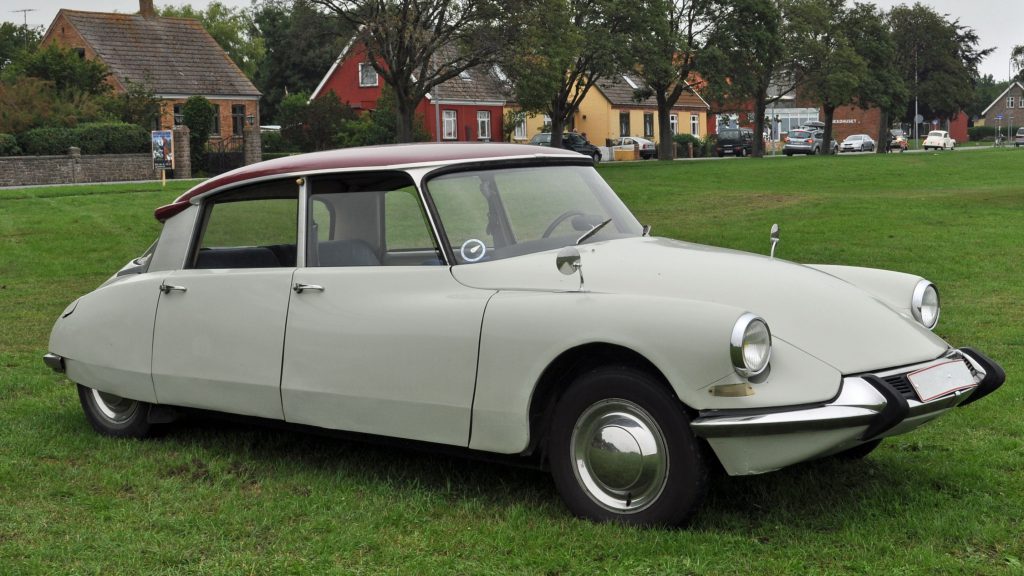History
At the 1955 Paris Motor Show, Citroen presented a revolutionary successor to the Traction Avant that had been in production for more than 20 years: the DS. Both the styling and the technology (hydropneumatic suspension, power steering, semi-automatic transmission) were a major step ahead – so much, indeed, that the DS stayed in production mostly unchanged for 20 years.
The initial engine offering was a 1.9l 75 hp four-cylinder, from which resulted the DS 19 model name. Throughout the car’s long production run, displacement and power were successively increased, eventually leading to the DS 23. The ID/D Special/D Super were the simpler lower-range models. In 1967, the front of the car was redesigned with dual headlights behind glass. The DS was also sold as station wagon, in several variations. Small numbers were built as convertible. Production ended in 1975 after almost 1.5 million built, succeeded by the Citroen CX.
Performance
The DS never was a performance car, despite winning the Monte Carlo rally twice. Even the 130 hp fuel-injected DS 23 ie provided unspectacular figures with a 0-100 kph time close to 12s and a maximum speed of 185 kph. The DS was always about comfort and style, not speed.
Pros
Gorgeous design, one of the most iconic cars on the planet. Comfortable.
Cons
Not a performance car. Complicated technology.
My pick
For many years I preferred the pre-1967 single-headlight model, but these days I’m not so sure. The ID actually isn’t much simpler than the DS, so maybe a nice DS 23?
